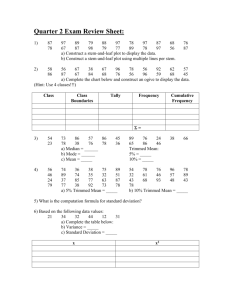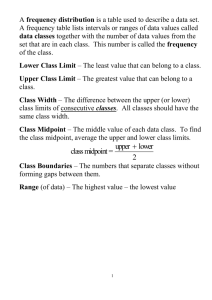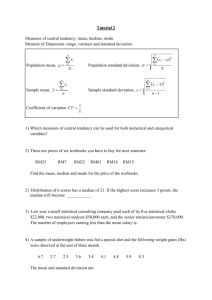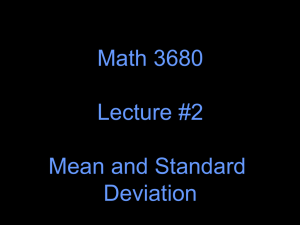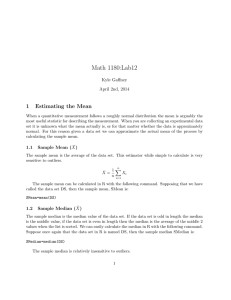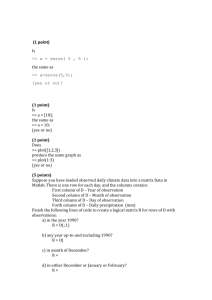Statistics: Median, Mode and Frequency Distribution
advertisement
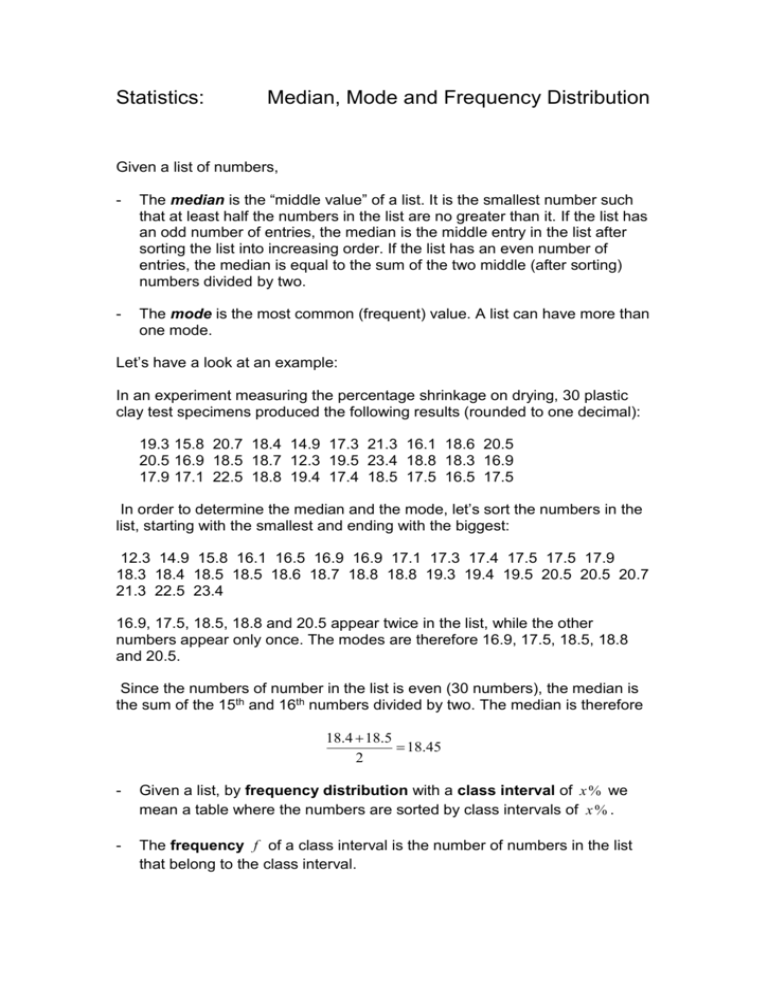
Statistics: Median, Mode and Frequency Distribution Given a list of numbers, - The median is the “middle value” of a list. It is the smallest number such that at least half the numbers in the list are no greater than it. If the list has an odd number of entries, the median is the middle entry in the list after sorting the list into increasing order. If the list has an even number of entries, the median is equal to the sum of the two middle (after sorting) numbers divided by two. - The mode is the most common (frequent) value. A list can have more than one mode. Let’s have a look at an example: In an experiment measuring the percentage shrinkage on drying, 30 plastic clay test specimens produced the following results (rounded to one decimal): 19.3 15.8 20.7 18.4 14.9 17.3 21.3 16.1 18.6 20.5 20.5 16.9 18.5 18.7 12.3 19.5 23.4 18.8 18.3 16.9 17.9 17.1 22.5 18.8 19.4 17.4 18.5 17.5 16.5 17.5 In order to determine the median and the mode, let’s sort the numbers in the list, starting with the smallest and ending with the biggest: 12.3 14.9 15.8 16.1 16.5 16.9 16.9 17.1 17.3 17.4 17.5 17.5 17.9 18.3 18.4 18.5 18.5 18.6 18.7 18.8 18.8 19.3 19.4 19.5 20.5 20.5 20.7 21.3 22.5 23.4 16.9, 17.5, 18.5, 18.8 and 20.5 appear twice in the list, while the other numbers appear only once. The modes are therefore 16.9, 17.5, 18.5, 18.8 and 20.5. Since the numbers of number in the list is even (30 numbers), the median is the sum of the 15th and 16th numbers divided by two. The median is therefore 18.4 18.5 18.45 2 - Given a list, by frequency distribution with a class interval of x % we mean a table where the numbers are sorted by class intervals of x % . - The frequency f of a class interval is the number of numbers in the list that belong to the class interval. - The Midpoint x1 of a group: for example the midpoint of the class interval 14.0 14.9 is x1 14.0 14.9 14.45 2 It may sound complicated but it is in fact rather straightforward. Let’s have a look at the frequency distribution of our example, with a class interval of 1% , starting with 12.0 – 12.9: Class interval of 1% Frequency f 1 0 1 1 4 6 8 3 3 1 1 1 12.0 – 12.9 13.0 – 13.9 14.0 – 14.9 15.0 – 15.9 16.0 – 16.9 17.0 – 17.9 18.0 – 18.9 19.0 – 19.9 20.0 – 20.9 21.0 – 21.9 22.0 – 22.9 23.0 – 23.9 Midpoint of the group x 12.45 13.45 14.45 15.45 16.45 17.45 18.45 19.45 20.45 21.45 22.45 23.45 You can also get the mean and the standard deviation from a frequency distribution: - Arithmetic mean from a frequency distribution: f x f 1 x - Standard deviation from a frequency distribution: f x x f 1 2 Using the formulae above, the mean and the standard deviation in our example are f x 112.45 0 13.45 114.45 115.45 4 16.45 6 17.45 30 f 1 x 8 18.45 3 19.45 3 20.45 1 21.45 1 22.45 1 23.45 30 1 so that x 18.25 and for the standard deviation, we have f x x f 1 2 1 (12.45 18.25) 2 0 (13.45 18.25) 2 ... 1 (23.45 18.25) 2 30 so that 4.893 2.212 . It is essential to know how to interpret your answers. Imagine that you have a job involving stats and that your boss ask you to make a survey of the time spend by the employees in front of the coffee machine. If one month later, you end in a report saying “well, the mean is 10 and the standard deviation is 1”… he might not be very impressed. Now, back to the example and let’s try to interpret the results: In a sample of 30 plastic clay test specimens, we found that the mean is 18.25 and the standard deviation is 2.212. A plastic clay test specimen therefore shrinks on average by 18.25% and since the standard deviation is rather small, we expect the percentage shrinkage of any given specimen to be, on average, close to 18.25%.
